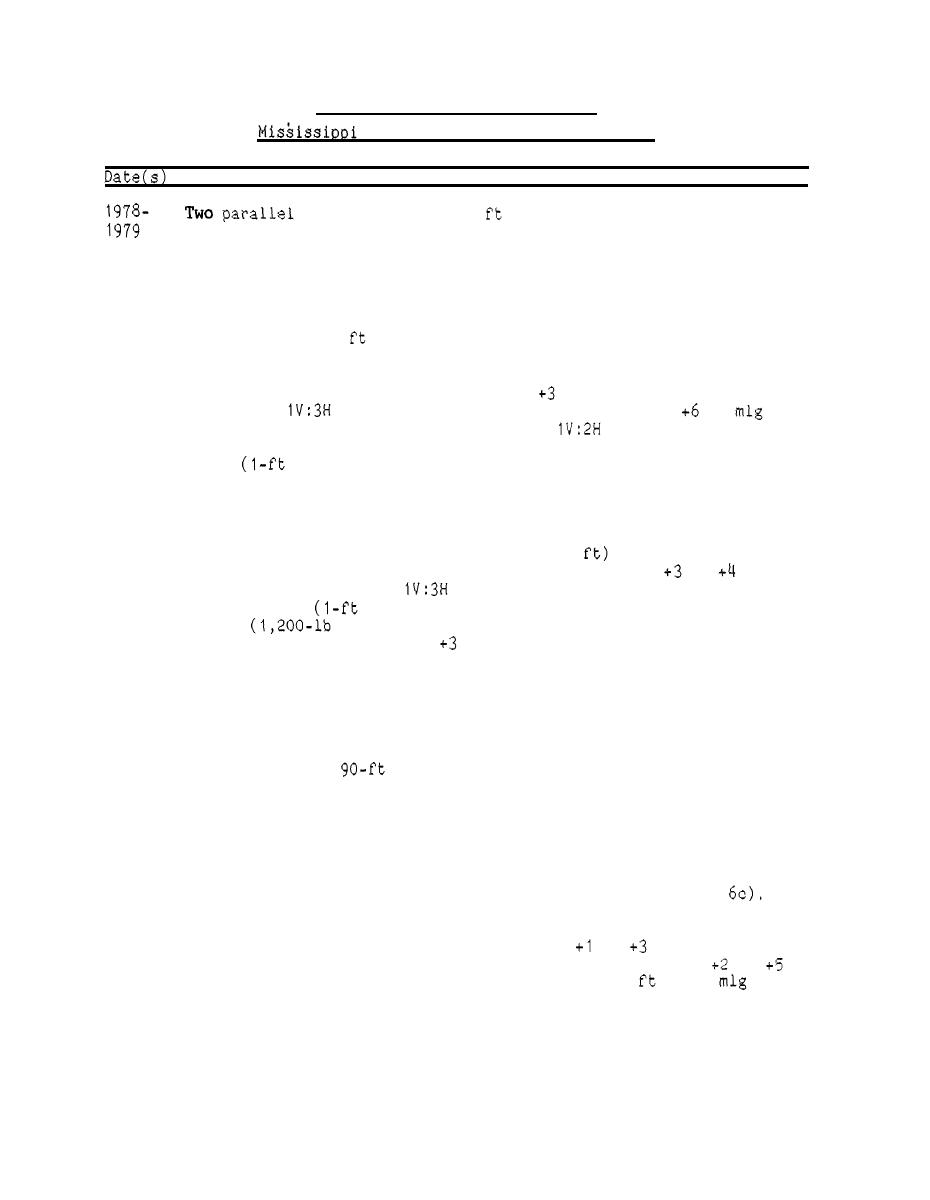
Table 2
Baptiste Collette Bayou Jetties
River Outlets, Venice, Louisiana
Construction and Rehabilitation History
jetties, spaced 520
apart, were constructed at the
entrance to Baptiste Collette Bayou (Figure 5 . With fairly imperm-
)
eable jetties in place, significant reductions in dredging would be
possible, thus reducing the overall cost of maintaining the Bayou
channel. These jetties are similar to those constructed at Tiger
Pass with the two waterways providing a shorter navigation route
between east and west gulf waters. The east jetty is 9,000 ft long
past the seaward end of the 7,000-ft-long west
and extends 2,000
jetty. A 20- by 250-ft channel is maintained between the jetties.
The east jetty (Figure 6a) was built in two geometric sections. The
ft mlg, a crown width of
lower section had a crown elevation of
26 ft, and
side slopes. The upper section had a
ft
crown elevation, a 4-ft crown width, and
side slopes. The
lower section was composed of shell material for the core and bedding
maximum thickness), followed by a 1.5-ft-thick layer of
layer
graded stone (500-lb maximum) placed on the side slopes only, and
capped with a 2-ft-thick layer of graded stone (1,200-lb maximum)
placed on the side slopes and crown. Graded stone (5,000-lb maximum)
was placed in the upper section. The upper section was not
constructed on a portion (approximately 950
of the jetty. The
west jetty (Figure 6b) had a crown elevation of from
to
ft mlg,
a 26-ft crown width and
side slopes. It was built up with a
maximum thickness) of shell and filled out with
bedding layer
graded
maximum) stone. Prior to construction, existing
to -6 ft mlg. Both jetties were built
ground elevations were from
on top of mostly soft clays and were expected to undergo large
settlements (up to 4 ft). Plastic filter fabrics of varying tensile
strengths were placed at four 500-ft-long test sections (2 sections
per jetty), prior or subsequent to placing shell material. Two
sections were at the seaward ends of the jetties and the remaining
two started 4,000 ft from the landward ends. Settlement plates were
placed at 80- to
intervals within test sections and at 500-ft
intervals elsewhere. These were placed to monitor settlement and the
effectiveness of the test sections. The total cost of construction
was about ,192,000using 17,400 sq yd of fabric, 41,000 cu yd of
shell, and 114,500 tons of graded stone.
1984
Repairs were made on the seaward end of the west jetty for a distance
of 4,550 ft, and the entire east jetty was repaired (Figure
(These were called repairs even though the original design called for
two-phase construction.) Existing ( 1983 survey) center-line eleva-
tions on sections to be repaired were from
to
ft National
ft
Geodetic Vertical Datum (NGVD) on the west jetty and from
to
NGVD on the east jetty. (NGVD datum is about 0.5
above
datum).
( Continued)
15



 Previous Page
Previous Page
